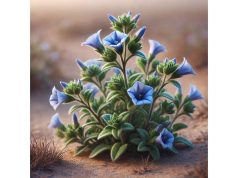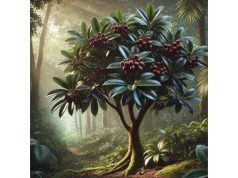
Echinacea is one of the most widely recognized and celebrated medicinal herbs, renowned for its immune-boosting properties and rich cultural heritage. Native primarily to North America, this perennial flowering plant, commonly known as the coneflower, has long been valued in traditional herbal medicine for its ability to ward off infections and enhance overall well-being. Echinacea’s vibrant, daisy-like blooms and distinctive spiky central cone not only add a splash of color to gardens but also serve as a symbol of nature’s healing power. Traditionally used by Native American tribes for a variety of ailments, modern research continues to explore the efficacy and mechanisms behind its reputed benefits.
Scientific studies and centuries of folk practice have both contributed to the herb’s esteemed reputation in the natural health community. From boosting immune responses to reducing the duration of colds and respiratory infections, Echinacea remains a popular choice among herbal enthusiasts and healthcare professionals alike. Its active compounds, including alkamides, polysaccharides, and caffeic acid derivatives, are believed to work synergistically to stimulate the body’s natural defenses while offering anti-inflammatory and antioxidant benefits. Today, Echinacea is available in numerous forms—from teas and tinctures to capsules and topical creams—making it accessible for both preventive and therapeutic applications.
- Supports and strengthens the immune system
- Helps reduce the duration and severity of colds and respiratory infections
- Provides anti-inflammatory and antioxidant benefits
- Widely used in traditional herbal medicine and backed by modern research
- Versatile applications in teas, tinctures, supplements, and topical remedies
Table of Contents
- Echinacea Botanical Profile and Distinctive Features
- Echinacea Historical Legacy and Cultural Context
- Echinacea Active Compounds and Phytochemical Composition
- Echinacea Health Benefits and Natural Properties
- Echinacea Uses, Applications, and Safety Guidelines
- Echinacea Research Insights and Recent Studies
- Echinacea Frequently Asked Questions (FAQ)
Echinacea Botanical Profile and Distinctive Features
Echinacea, commonly referred to as the coneflower, belongs to the Asteraceae family and is native to the prairies and open woodlands of North America. There are several species within the Echinacea genus, with Echinacea purpurea, Echinacea angustifolia, and Echinacea pallida being the most extensively studied and used for medicinal purposes.
Morphology and Growth Characteristics
- Plant Structure:
Echinacea is a herbaceous perennial that typically grows to a height of 2 to 4 feet. It features sturdy, branching stems and a basal rosette of green, lance-shaped leaves. The plant’s overall appearance is both robust and graceful, making it a favorite among gardeners. - Flowers:
The most recognizable aspect of Echinacea is its large, daisy-like flowers. Each bloom consists of a central, spiky cone surrounded by numerous ray florets that range in color from vibrant purple and pink to white and yellow. This distinctive arrangement not only attracts pollinators such as bees and butterflies but also plays a crucial role in the plant’s reproductive strategy. - Root System:
Echinacea develops a deep taproot, which allows it to access nutrients and moisture from deeper soil layers. This robust root system contributes to the plant’s drought tolerance and resilience, ensuring its survival in diverse environmental conditions.
Habitat and Cultivation
- Native Environment:
Echinacea thrives in well-drained soils and is typically found in prairies, meadows, and open woodlands. It prefers full sun but can tolerate partial shade, making it adaptable to a range of growing conditions. - Cultivation Practices:
Due to its popularity both as an ornamental and medicinal plant, Echinacea is now cultivated worldwide. Gardeners value it for its ease of growth, low maintenance requirements, and its ability to attract beneficial pollinators. In commercial settings, careful cultivation practices ensure the preservation of its bioactive compounds, which are essential for its medicinal efficacy.
Ecological Importance
Echinacea plays a significant role in supporting local ecosystems. Its flowers provide a vital source of nectar and pollen for a variety of pollinators, including bees, butterflies, and hummingbirds. Moreover, the plant’s extensive root system helps prevent soil erosion and contributes to soil health by enhancing nutrient cycling. These ecological benefits underscore the importance of Echinacea not only as a medicinal herb but also as a key component of sustainable landscaping and conservation efforts.
Echinacea Historical Legacy and Cultural Context
The use of Echinacea in traditional medicine dates back centuries, with its roots deeply embedded in the healing practices of Native American tribes. Historical records and oral traditions reveal that indigenous peoples recognized the potent healing properties of Echinacea long before it became popular in modern herbal medicine.
Traditional Uses and Indigenous Knowledge
- Native American Healing:
Various Native American tribes, including the Plains and Eastern Woodlands tribes, utilized Echinacea for its immune-boosting and anti-inflammatory properties. It was commonly used to treat respiratory infections, wounds, and snakebites. The plant was often prepared as a tea, poultice, or tincture, and its use was sometimes accompanied by ceremonial practices intended to enhance its healing power. - Symbolic Significance:
In addition to its practical applications, Echinacea held spiritual significance. Its vibrant purple flowers and robust growth were seen as symbols of resilience, vitality, and the regenerative power of nature. These cultural associations contributed to its revered status among indigenous communities.
European Adoption and Modern Herbalism
- Early European Encounters:
With the arrival of European settlers in North America, traditional Native American medicinal practices, including the use of Echinacea, began to be documented and adopted. Early herbalists and physicians recognized the potential of Echinacea as a natural remedy for infections and immune support. - Evolution in Popularity:
By the 20th century, Echinacea had gained widespread popularity as a complementary treatment for colds and respiratory infections. Its use was popularized in Europe and North America, leading to extensive research into its efficacy and safety. Today, it is one of the most commonly used herbal supplements worldwide, often marketed as an immune system booster.
Cultural Impact and Modern Perception
Echinacea’s cultural impact extends beyond its medicinal uses. Its striking appearance has made it a staple in gardens and landscapes, symbolizing natural beauty and health. Modern consumers appreciate Echinacea not only for its therapeutic benefits but also for its role as a bridge between traditional herbal wisdom and contemporary natural health practices. The resurgence of interest in holistic and integrative medicine has further cemented its place in both popular culture and scientific inquiry.
Echinacea Active Compounds and Phytochemical Composition
The therapeutic potential of Echinacea is largely attributed to its rich and diverse phytochemical profile. Modern research has identified several key compounds that work synergistically to bolster the immune system and provide anti-inflammatory benefits.
Major Bioactive Constituents
- Alkamides:
Echinacea is particularly noted for its high concentration of alkamides, which are believed to stimulate immune cell activity. These compounds are credited with modulating the function of macrophages, natural killer cells, and other components of the immune system, thereby enhancing the body’s ability to ward off infections. - Polysaccharides:
The plant contains complex polysaccharides that contribute to its immunostimulatory effects. These molecules help activate various immune responses and may also exhibit anti-inflammatory properties, supporting overall health and resilience against pathogens. - Caffeic Acid Derivatives:
Among the most well-known of these compounds is cichoric acid, a type of caffeic acid derivative. Cichoric acid is a potent antioxidant that helps neutralize free radicals and reduce oxidative stress. It is also thought to play a role in the immune-enhancing properties of Echinacea. - Glycoproteins and Flavonoids:
In addition to alkamides and polysaccharides, Echinacea contains glycoproteins and flavonoids, which contribute to its antioxidant and anti-inflammatory activities. These compounds not only help protect cells from damage but also support the overall efficacy of the herb in promoting health.
Synergistic Interactions
The overall effectiveness of Echinacea is not due to a single compound but rather the complex interplay between its various bioactive constituents. Research suggests that these compounds work synergistically, enhancing each other’s effects and providing a more comprehensive immunomodulatory response. This synergy is a key factor in the herb’s longstanding use as a natural remedy for infections and inflammation.
Research Methodologies
Advanced analytical techniques such as high-performance liquid chromatography (HPLC) and mass spectrometry have been instrumental in identifying and quantifying the active compounds in Echinacea. These methods allow researchers to understand the detailed phytochemical composition of the herb and explore the mechanisms through which it exerts its effects. Ongoing research continues to refine our understanding of these interactions, with the goal of optimizing the use of Echinacea in clinical settings.
Echinacea Health Benefits and Natural Properties
Echinacea is best known for its powerful impact on the immune system, but its benefits extend well beyond just fighting infections. Both traditional use and modern research have highlighted a range of health benefits associated with this versatile herb.
Key Health Benefits
- Immune System Support:
One of the primary reasons for Echinacea’s popularity is its ability to boost immune function. Clinical studies suggest that regular use of Echinacea supplements may help reduce the duration and severity of common colds and other respiratory infections by stimulating the production and activity of white blood cells. - Anti-Inflammatory Properties:
The anti-inflammatory effects of Echinacea, largely attributed to its alkamides and caffeic acid derivatives, help reduce swelling and discomfort in various inflammatory conditions. This makes it a valuable addition to integrative approaches for managing conditions such as arthritis and other inflammatory disorders. - Antioxidant Activity:
The flavonoids and cichoric acid in Echinacea offer significant antioxidant protection. These compounds work to neutralize free radicals, reducing oxidative stress and potentially lowering the risk of chronic diseases such as heart disease and certain cancers. - Enhanced Wound Healing:
Traditional uses of Echinacea include its application to minor cuts and abrasions to accelerate healing. Its antimicrobial and anti-inflammatory properties contribute to a more efficient wound healing process, making it a natural choice in topical remedies. - Respiratory Health:
Echinacea is commonly used as an expectorant and decongestant in herbal medicine. Its ability to promote mucus clearance and support respiratory function makes it a popular remedy during cold and flu season.
Holistic Health Impact
Beyond its specific physiological benefits, Echinacea also plays a role in promoting overall vitality and well-being. Its use is often integrated into holistic health practices that emphasize a balanced lifestyle, stress reduction, and natural healing. The herb’s ability to enhance immune function and protect against oxidative damage contributes to a general sense of resilience and improved quality of life.
Dosage and Administration
Echinacea is available in various forms, including teas, tinctures, capsules, and topical creams. The method of administration can affect the bioavailability of its active compounds. For instance, tinctures and capsules are often preferred for systemic immune support, while teas and topical formulations may be used for localized effects. Proper dosage is crucial, as both underdosing and overdosing can diminish its therapeutic efficacy or lead to adverse effects.
Echinacea Uses, Applications, and Safety Guidelines
Echinacea is utilized in a multitude of applications, ranging from daily health supplements to specific therapeutic interventions. While its benefits are well-documented, proper use and adherence to safety guidelines are essential to maximize its advantages and minimize potential risks.
Common Applications
- Immune-Boosting Supplements:
Echinacea is perhaps most widely recognized as a natural immune booster. Many people take Echinacea supplements during cold and flu season to help reduce the severity and duration of respiratory infections. These supplements come in various forms, including capsules, tablets, and liquid extracts. - Herbal Teas and Tinctures:
Traditional herbal teas and tinctures made from Echinacea roots, leaves, or flowers are popular among herbalists. These preparations are used to support the immune system and help alleviate symptoms of minor infections. They are valued for their ease of use and pleasant taste. - Topical Applications:
Some formulations incorporate Echinacea extracts into creams and ointments for their anti-inflammatory and antimicrobial properties. These topical products are used to aid wound healing, soothe skin irritations, and reduce inflammation in localized areas. - Integrative Medicine:
In modern complementary and integrative medicine, Echinacea is often used alongside other herbal remedies and conventional treatments. Its role in boosting immune function makes it a common adjunct in protocols aimed at enhancing overall health and recovery.
Safety Guidelines
- Dosage Recommendations:
It is essential to follow recommended dosage guidelines when using Echinacea. Overuse may lead to side effects such as gastrointestinal discomfort, while underuse may not provide the desired therapeutic benefits. Consultation with a healthcare provider can help determine the appropriate dosage based on individual needs. - Potential Side Effects:
Although Echinacea is generally considered safe for most people, some individuals may experience allergic reactions, particularly those with allergies to plants in the Asteraceae family. Common side effects include skin rashes, stomach upset, and in rare cases, more severe allergic responses. - Contraindications:
Pregnant or breastfeeding women and individuals with autoimmune disorders should exercise caution with Echinacea use, as its immune-stimulating properties may not be appropriate for everyone. Always consult with a healthcare professional before starting any new herbal regimen. - Quality Control:
To ensure efficacy and safety, it is important to use Echinacea products from reputable manufacturers. Look for products that have undergone rigorous quality testing and adhere to established standards of purity and potency.
Echinacea Research Insights and Recent Scientific Studies
Echinacea has been the focus of extensive scientific research, aimed at understanding its mechanisms of action and validating its traditional uses. Over the past few decades, a growing body of evidence has emerged, supporting many of the herb’s reputed benefits.
Notable Research Findings
- Immune Stimulation Studies (2017):
A study published in the Journal of Clinical Immunology in 2017 examined the effects of Echinacea supplementation on immune cell activity. The research, titled “Immunomodulatory Effects of Echinacea Purpurea in Healthy Subjects,” found that regular use of Echinacea significantly increased the activity of natural killer cells and other components of the immune system, which correlated with a reduction in cold symptoms. - Anti-Inflammatory and Antioxidant Research (2018):
In 2018, researchers in Phytotherapy Research published a paper on the anti-inflammatory properties of Echinacea. The study demonstrated that the herb’s flavonoids and caffeic acid derivatives helped lower inflammatory markers and oxidative stress in vitro. These findings provide a scientific basis for its use in managing inflammatory conditions. - Clinical Trials on Cold Duration (2019):
A randomized, double-blind clinical trial published in Evidence-Based Complementary and Alternative Medicine in 2019 evaluated the effectiveness of Echinacea in reducing the duration of the common cold. The results indicated that participants taking standardized Echinacea extracts experienced a statistically significant reduction in cold duration compared to those taking a placebo. - Pharmacokinetic and Safety Evaluations (2020):
Recent studies published in Pharmacognosy Magazine in 2020 have focused on the pharmacokinetics, bioavailability, and safety profile of Echinacea’s active compounds. These studies help define optimal dosing regimens and identify potential interactions with conventional medications, ensuring that Echinacea can be used safely in integrative medical practices.
Echinacea Frequently Asked Questions (FAQ)
What is Echinacea and where is it commonly grown?
Echinacea is a perennial flowering herb native to North America, widely known as coneflower. It grows in prairies, meadows, and open woodlands, and is now cultivated in gardens and farms around the world for its medicinal and ornamental value.
How does Echinacea support the immune system?
Echinacea stimulates immune cell activity, including the activation of natural killer cells, which helps the body ward off infections. Its active compounds, such as alkamides and polysaccharides, work together to enhance immune responses and reduce the duration of colds.
What are the most common forms of Echinacea available?
Echinacea is available in many forms, including capsules, tablets, liquid extracts, teas, and topical preparations. These diverse formulations allow for both internal and external applications to support immune health and reduce inflammation.
Are there any side effects associated with Echinacea use?
Most people tolerate Echinacea well, but some may experience allergic reactions, gastrointestinal discomfort, or skin irritation. It is advisable to follow dosage guidelines and consult with a healthcare provider, especially if you have allergies or pre-existing conditions.
What does recent research say about Echinacea’s benefits?
Recent studies published in journals such as the Journal of Clinical Immunology and Phytotherapy Research have validated Echinacea’s immune-stimulating, anti-inflammatory, and antioxidant properties, supporting its traditional use for reducing cold duration and enhancing overall immune function.
Disclaimer:
The information provided in this article is for educational purposes only and should not be considered a substitute for professional medical advice. Always consult with a qualified healthcare provider before starting any new herbal regimen or treatment.
Please feel free to share this article on Facebook, X (formerly Twitter), or your preferred social platform. Your support in spreading this knowledge helps others discover the natural benefits, rich heritage, and diverse applications of Echinacea!










